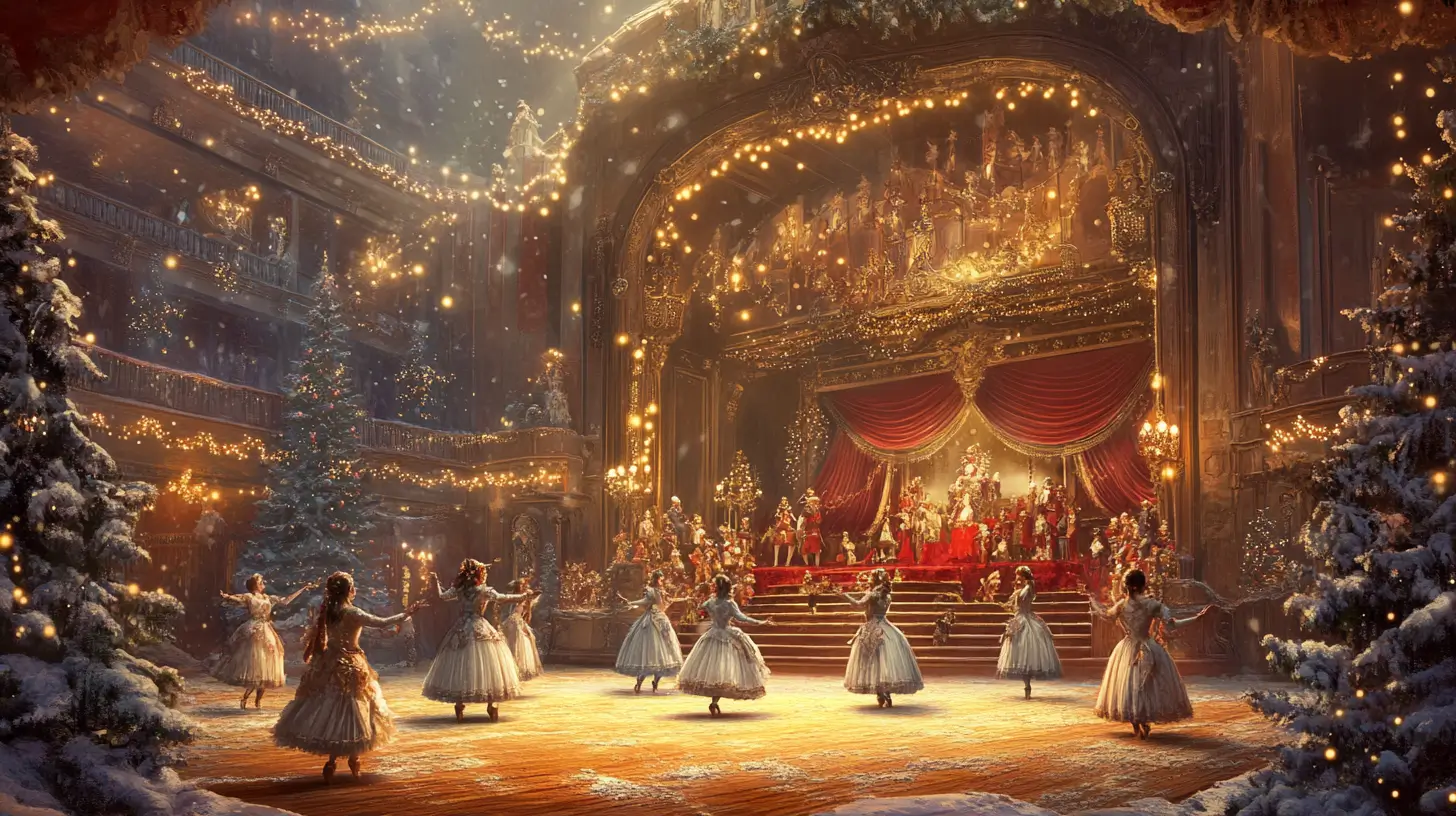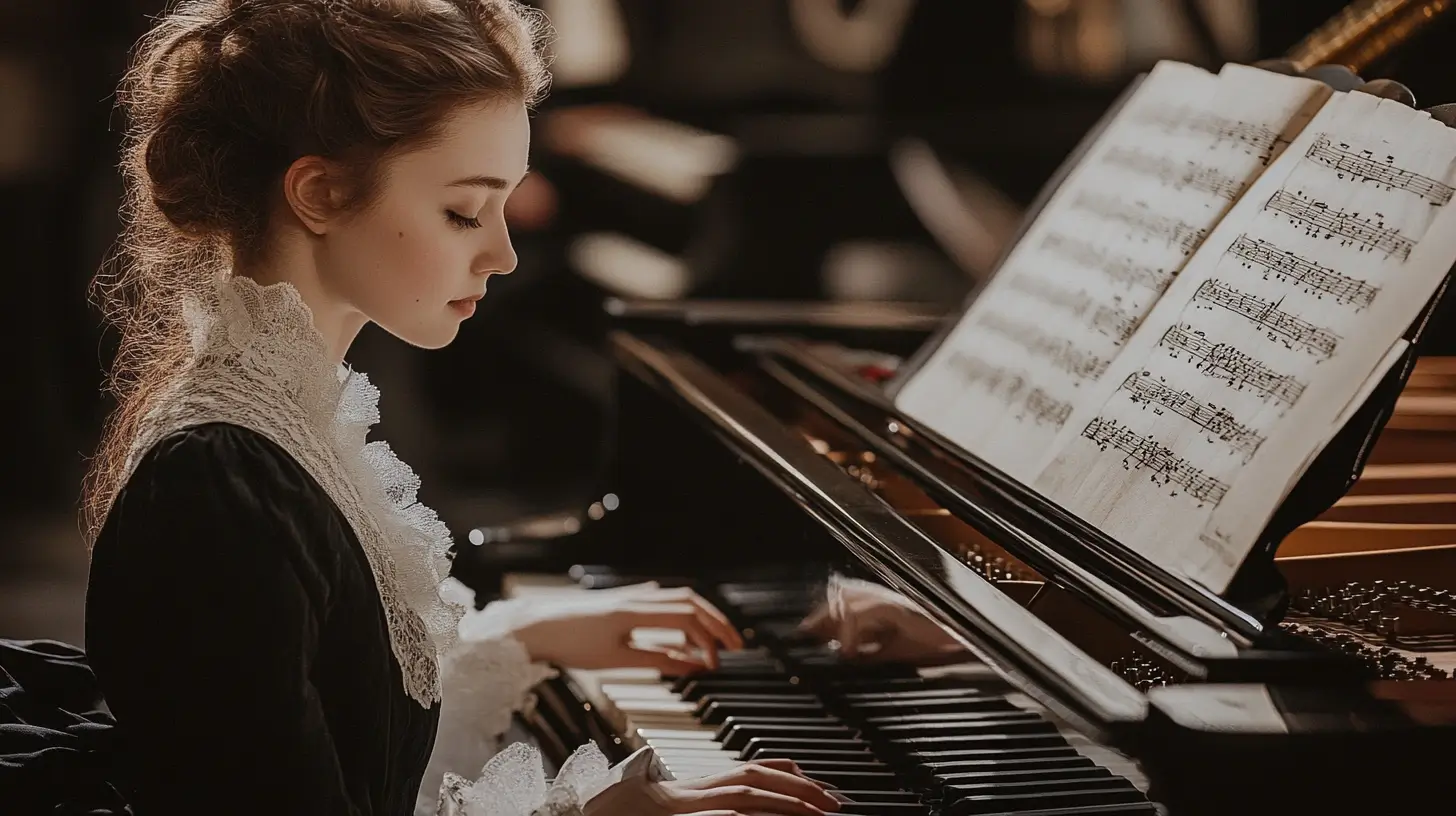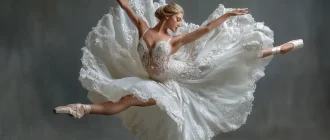The Nutcracker ballet, also known as Ballet The Nutcracker, is a holiday classic. Since 1892, it has enchanted audiences with the magical story of Clara and the Nutcracker Prince. This article covers its rich history, notable evolutions, costumes, music, and key productions, showing why it remains a festive favorite.
Key Takeaways
- The Nutcracker premiered at the Mariinsky Theatre in 1892 and has evolved from a poorly received performance to a beloved holiday tradition worldwide.
- Key adaptations, notably George Balanchine’s 1954 version, have shaped The Nutcracker’s status in American ballet, emphasizing childhood and magical storytelling themes.
- Cultural sensitivity initiatives are being implemented to address outdated stereotypes in The Nutcracker, reflecting a broader shift in ballet toward more inclusive and respectful narratives.
Art de Podcast
| Category | Details |
|---|---|
| Composer | Pyotr Ilyich Tchaikovsky |
| Libretto | Marius Petipa (based on E.T.A. Hoffmann’s The Nutcracker and the Mouse King) |
| First Performance | December 18, 1892, at the Mariinsky Theatre, St. Petersburg, Russia |
| Choreography (Original) | Marius Petipa and Lev Ivanov |
| Main Characters | Clara (or Marie), The Nutcracker Prince, Sugar Plum Fairy, Drosselmeyer, Mouse King |
| Famous Pieces | Dance of the Sugar Plum Fairy, Waltz of the Flowers, March of the Toy Soldiers |
| Act Structure | 2 acts |
| Setting | Christmas Eve in a European Home (Act 1) and the Land of Sweets (Act 2) |
| Significance | It is a timeless holiday classic and one of the most performed ballets around Christmas. |
| Global Popularity | Particularly popular in the U.S., U.K., and Europe, it is often a staple of holiday performances. |
| Notable Adaptations | Films, animated versions, modern dance interpretations |
| Popular Ballet Companies | American Ballet Theatre (USA), The Royal Ballet (UK), Bolshoi Ballet (Russia) |
| Impact on Culture | Integral to holiday traditions; widely used in commercials, TV, and movies during Christmas |
| Iconic Choreographers | George Balanchine, Rudolf Nureyev, and Sir Peter Wright are known for their Nutcracker productions. |
| Main Themes | Christmas, magic, childhood dreams, adventure, transformation, good vs. evil |
Origins and First Performance

The Nutcracker premiered at the Mariinsky Theatre in Saint Petersburg on December 18, 1892. It was part of a double bill that included scenes from the opera Cherevichki. Despite its grand debut, the ballet did not receive immediate acclaim. Critics at the time were not kind, dismissing it as less compelling than other works of the era.
Choreographed by Marius Petipa and Lev Ivanov, two influential figures in ballet, the original production brought E.T.A. Hoffmann’s tale, “The Nutcracker and the Mouse King,” to life, laying the groundwork for a beloved annual holiday tradition.
It took many years for “The Nutcracker” to gain the recognition it deserved. Today, it is a testament to the enduring power of storytelling through Dance, captivating audiences of all ages and inspiring countless adaptations worldwide.
Evolution of The Nutcracker Ballet

The evolution of “The Nutcracker” ballet is a fascinating journey that mirrors the changing tastes and artistic innovations of the ballet world. The story, based on E.T.A. Hoffmann’s “The Nutcracker and the Mouse King,” has seen numerous adaptations since its inception.
In 1919, Alexander Gorsky’s version introduced adult dancers to the roles of Clara and the Prince, creating a romantic subplot and adding a new layer of emotional depth to the narrative.
In 1954, George Balanchine’s adaptation of The Nutcracker premiered and quickly became a staple of American ballet. Balanchine’s version is particularly noted for featuring actual children in the dance lead roles, emphasizing the story’s magical and innocent aspects. This adaptation played a crucial role in cementing The Nutcracker as a beloved holiday tradition in the United States.
Recently, choreographers like Mark Morris and Matthew Bourne have reinterpreted the original narrative and themes, reflecting contemporary societal values and artistic sensibilities. These modern takes continue to push the boundaries of classical ballet, ensuring its relevance for new generations.
The Boston Ballet has contributed significantly to the evolution of “The Nutcracker” by offering performances with new choreography and elaborate sets. Each production brings a unique flavor, enhancing the visual and emotional appeal of the ballet.
Key Characters and Scenes
“The Nutcracker” is renowned for its serious music, vivid characters, and memorable scenes, each contributing to the enchanting narrative. Central to the story is Clara, a young girl who receives a wooden nutcracker doll as a gift and embarks on a fantastical adventure.
One of the most iconic characters is the Sugar Plum Fairy, who rules the Land of Sweets. The second act of her Dance with the Cavalier highlights the elegance and grace that define classical ballet.
This Grand Pas de Deux is a stunning display of elaborate choreography, costumes, and technical dancing prowess.is transformed into a wooden doll, and the Nutcracker Prince leads Clara through enchanted realms after defeating the main act’s antagonist, the Mouse King. The battle between the Nutcracker’s forces and the toy soldiers of the Mouse King’s army is a thrilling and pivotal moment in the ballet.
Other memorable scenes include the Snowflakes Dance, a party scene where the principal dancers embody snowflakes, creating a magical winter atmosphere in Swan Lake. Elaborate scenery and costumes further immerse the audience in Clara’s dreamlike journey, making each act a visual and emotional feast.
Musical Masterpieces of Tchaikovsky

The music of “The Nutcracker,” composed by Pyotr Ilyich Tchaikovsky, is celebrated for its orchestration and thematic depth. Composed between 1891 and 1892, Tchaikovsky’s score enhances the narrative and elevates the ballet to a sublime artistic experience.
Among the Orchestra’s most famous pieces are the Nutcracker Suite and the Dance of the Sugar Plum Fairy. Both showcase Tchaikovsky’s unique piano style and mastery of musical storytelling. These compositions have become synonymous with the holiday season and are often performed independently of the ballet.
Introducing children to Tchaikovsky’s music before attending a performance can enhance their engagement. Familiarizing them with pieces like the Dance of the Sugar Plum Fairy helps them recognize and appreciate the music, making the experience more immersive and enjoyable.
Major Productions Around the World

“The Nutcracker” has become a global phenomenon, with various ballet companies creating distinct interpretations that reflect local culture and artistic vision. Since its introduction in the mid-20th century, it has emerged as one of the most performed ballets during the Christmas season worldwide.
Each production contributes its unique style, which contributes to the Nutcracker’s diverse appeal. From traditional renditions to innovative adaptations, the ballet captivates global audiences.
Willam Christensen mounted the first full production of The Nutcracker in the United States on December 24, 1944, establishing it as an annual Christmas tradition and the ballet’s enduring popularity during the holiday season.
New York City Ballet’s George Balanchine’s The Nutcracker
George Balanchine’s version of “The Nutcracker” debuted in 1954 and has become a beloved holiday tradition in New York City. Performed annually by the New York City Ballet, dancing this adaptation has become a cherished part of the holiday season.
Balanchine’s adaptation is renowned for its elaborate staging and choreography, setting a high standard for productions worldwide. The New York City Ballet has continually refined the performance, removing stereotypical elements from the Chinese Dance since 2017 to promote cultural sensitivity, a legacy of its choreographer, George Balanchine.
Boston Ballet’s Annual Performance
The Boston Ballet’s annual “The Nutcracker” performance is a cherished holiday tradition renowned for its exceptional production quality. This performance captivates audiences with innovative choreography, elaborate costume design, and stunning set pieces.
The Boston Ballet attracts a diverse audience and offers its dancers a magical experience that resonates with children and adults alike. Each year, this performance brings the enchanting world of “The Nutcracker” to life, making it a highlight of the holiday season.
Pacific Northwest Ballet and Other Notable Companies
The Pacific Northwest Ballet is known for its innovative and artistic productions, contributing significantly to the ballet community in the Northwest. Their performances often emphasize unique storytelling and aesthetic choices, showcasing various interpretations of classical works.
Some companies, such as the San Francisco Ballet, have incorporated culturally authentic elements like a dragon dance into their performances, moving away from outdated stereotypes. This reflects a broader societal change as ballet evolves with culturally sensitive narratives.
Cultural Impact and Adaptations
Major productions of “The Nutcracker” significantly contribute to holiday traditions across various cultures. Despite its initial poor reception, the ballet gained popularity after George Balanchine’s staging in 1954, cementing its place in cultural history.
Numerous ballet companies worldwide have embraced the Nutcracker, making it a significant part of their annual performances. This widespread adoption has led to multiple adaptations in various media, including television, movies, and literature, showcasing its enduring appeal.
Innovative stage productions like the Harlem Nutcracker, which infuses cultural elements into the classic story, demonstrate the ballet’s ability to adapt and remain relevant. These stage adaptations continue to breathe new life into the timeless tale.
Addressing Stereotypes and Sensitivity
The portrayal of Asian characters in “The Nutcracker” has often relied on outdated stereotypes, such as exaggerated gestures and makeup, that misrepresent Chinese culture. Dancers with Asian heritage, like Georgina Pazcoguin, have expressed discomfort with these traditional portrayals.
Efforts are being made to replace offensive depictions in ballet and theatre with initiatives like the “Final Bow for Yellowface” to promote cultural sensitivity. The Balanchine Trust has informed other ballet and theatre companies that adaptations addressing cultural sensitivity are permissible but not mandatory.
Planning Your Visit: Tips for Enjoying The Nutcracker

Planning your visit to see The Nutcracker can enhance the experience and ensure a memorable outing. Having a meal before the show is advisable, as the performance lasts about two hours, including intermission.
Choosing comfortable yet festive attire for children can increase their excitement about attending the ballet. Discussing proper theater etiquette with children before the performance prepares them for expected behaviors, such as remaining quiet and clapping appropriately.
Offering a special treat during intermission can motivate kids to behave well during the performance, making the experience enjoyable for everyone.
Summary
The Nutcracker continues to captivate audiences worldwide, thanks to its rich history, enchanting music, and memorable characters. From its origins at the Mariinsky Theatre to its evolution under the guidance of George Balanchine and other visionary choreographers, the ballet has become a beloved holiday tradition.
Major productions by companies like the New York City Ballet, Boston Ballet, and Pacific Northwest Ballet demonstrate the diverse interpretations and artistic excellence that keep “The Nutcracker” relevant. The ballet’s cultural impact is further reflected in its numerous adaptations across various media.
As you plan your visit to see “The Nutcracker,” remember to savor every moment of this magical experience. Whether you’re a first-time attendee or a seasoned enthusiast, ” The Nutcracker ” ‘s timeless charm and magic promise to enchant and inspire.







